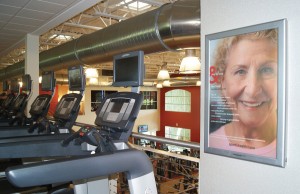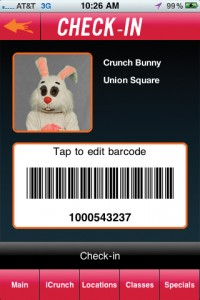 Open and honest communication is the key to any great relationship — including the relationship you have with your members! The way you communicate with your members sets a tone for your club and, whether you realize it or not, is a huge part of your marketing campaign.
Open and honest communication is the key to any great relationship — including the relationship you have with your members! The way you communicate with your members sets a tone for your club and, whether you realize it or not, is a huge part of your marketing campaign.
Marketing is not just about appealing to new members, it’s the way you exchange and deliver valuable information to everyone involved with your club.
Prospects
Even your best customers get tired of being a sales target day after day. Creating an effective brand and raising its awareness will allow your club to seep into a prospect’s life more naturally. This isn’t to say you should stop running deals and promotions, but working on the company’s brand approach will ensure success when that promotion does reach your member’s neighbor’s door.
“Our long term branding efforts with our ‘no judgments’ policy, showing that fitness can be fun, and that Crunch is fun, helps us communicate effectively,” said Christina DeGuardi, the senior vice president of marketing for Crunch Fitness. “We are also very generous with our guest passes because we believe if you try our product, you’ll like it.”
Every club should have a unique selling proposition (USP). The best way to spread the word about your USP is to announce it everywhere, said Curtis Mock, the executive director of gymsuccess.com “Put it on all of your marketing, on your website, on your signage, on the walls of your club, on your business cards, everywhere. You also need to make sure your USP is clear. You cannot be the low-price competitor and the best service — no one will believe it. Pick a USP, commit yourself and your team to it, and tell the world about it over and over and over again.”
Showing prospects what they can come to expect if they join your club is a great marketing tool. Colleen Wolak, the e-mail marketing and social media director for Sport&Health, manages a prospect e-mail campaign for anyone who has visited or requested information to let them know about special offers and open house events. “We like to add extra value to these messages by including articles from our personal trainers and programming staff, as well as links to our Facebook and Twitter sites to help prospects better connect with our company,” she said. Sport&Health has also bolstered their presence on review sites like Yelp to include photos of clubs and guest passes.
Incorporating your club as a seamless part of the local community shows members you care about the entire community, and not just those willing to join the gym. O2 Fitness takes a hands-on approach to marketing by regularly participating in community events, said Shanna Kane, the director of marketing. “We decided to really open our participation to a wide variety of events. Typically religious and political functions are out. We like to stay neutral with those so we don’t cause any waves with our members. As far as everything else, we just have to make sure it’s the right size event, that we can help them advance their cause and if it fits into our brand promise and our image. I get contacted by about 10 events per week, and we will participate in about nine of them.
“It’s a great way to let prospects know that we are a fitness facility that truly cares, not only about fitness and exercise, but about keeping our community healthy. We live here, work here, raise families here; so why wouldn’t we want to use our extra manpower for a good reason? Many companies don’t take the time to participate in their local events, its just another way to give back and that always helps sell!”

Marketing to members is not over once they sign up; keeping them regularly informed on the happenings of your club is crucial!
Communication with your current members will keep them engaged, said Amy Bullock, a marketing associate at Affiliated Acceptance Corp. “Keeping in contact with each of your members will create an opportunity for you as a club owner to keep your members engaged. Member engagement is vital to running a successful facility and maintaining membership retention rates.”
Utilizing your website and updating it regularly will provide members with the constant information they need. Crunch’s website sees about half of its traffic from members and half from potential members. It gets updated a few times a day, DeGuardi said. They have launched a mobile app as well. Corporate marketing for Crunch sends out a monthly newsletter and news gets e-mail blasted when necessary. “It’s important that blasting comes from corporate, then it’s one address sending out information. E-mails will get spammed if they’re coming from multiple addresses. We try not to over communicate with members too, we think long and hard before we send something.”
Sport&Health members have a community website where they can post blogs, photos, view upcoming events and more. The club has an active Facebook and Twitter presence, as well as a mobile application that assists members in easily finding the latest class schedules.
Setting up a communal location inside the club for members to ingest information gives consistency, allows members to communicate with each other and creates a sense of community inside the club. Crunch has two separate places set up within a club for such communication. They have a community corkboard that allows members to post their own information, like deals from local business. They also use a chalkboard that staff and members write on to communicate with each other.
At O2 Fitness there are general areas set up within the club where members know they can find information about upcoming events and general information — mostly at the front desk and above water fountains — big events go on the front doors. Ads on televisions throughout the club help Sport&Health get the word out to their members as well as other signage inside.
Troubleshooting and the Internet
The Internet and social media are both a blessing and a curse to a club’s marketing — any information good or bad can go “viral” quickly. Social media can be a great marketing tool if it’s handled properly and given the deserved attention.
As the director of marketing, Kane spends a good amount of time on O2’s Facebook page ensuring all questions and concerns are addressed. “I constantly monitor the blog for comments, and always retweet (on Twitter) the fun comments that our members make while at the club! In the last year, we have gone from 300 Facebook fans to 3,200 just because we know how important it is to keep members connected this way. I don’t know what we would do without it,” she said.
For DeGuardi, she believes technology has made everything related to customer service easier and better. When she started, Crunch only had about 10,000 e-mails out of the 100,000 members. Now they have about 80 percent of member e-mails. “Consumers have changed the way they want and expect to be communicated with. They want it online, they want e-mail,” she said. Although, keeping a cohesive message online can be a challenge at times. What worked for Crunch was keeping the communications and marketing staff on the same page as the general managers and front desk staff in the individual clubs.
Another challenge for clubs is addressing the complaints members and guests can post to Facebook, Twitter, Yelp, etc., and ensuring that problems don’t go unnoticed. “It happens to everybody,” DeGaurdi said.
“I think you manage it with honesty and communication. We get a lot of traffic and comments on our website that come to member service and the marketing staff. We officially log them and respond. I’ll even respond myself.”
“First and foremost, we want to acknowledge their concern,” Wolak said. “The next step is to take the conversation offline if possible. No company is immune from occasional negative buzz online. The best thing you can do is be responsive to those concerns. I’ve actually had members thank me publicly for responding to their concern, even though I personally wasn’t able to change their situation. Sometimes, members just want to know they’ve been heard.”
“We can’t delete these comments, but we can try to solve their problem and show that we are here to help, to other potential members,” Kane said. She contacts the members in whatever medium they wrote about them.
It’s not always possible to stop every negative thing being said on the Internet in today’s world, but that doesn’t mean clubs shouldn’t do everything in their power to please disgruntled members.

“Our members are super passionate about our brand,” DeGuardi said. “They stick with us.” -CS
By Ali Cicerchi









Comments 1